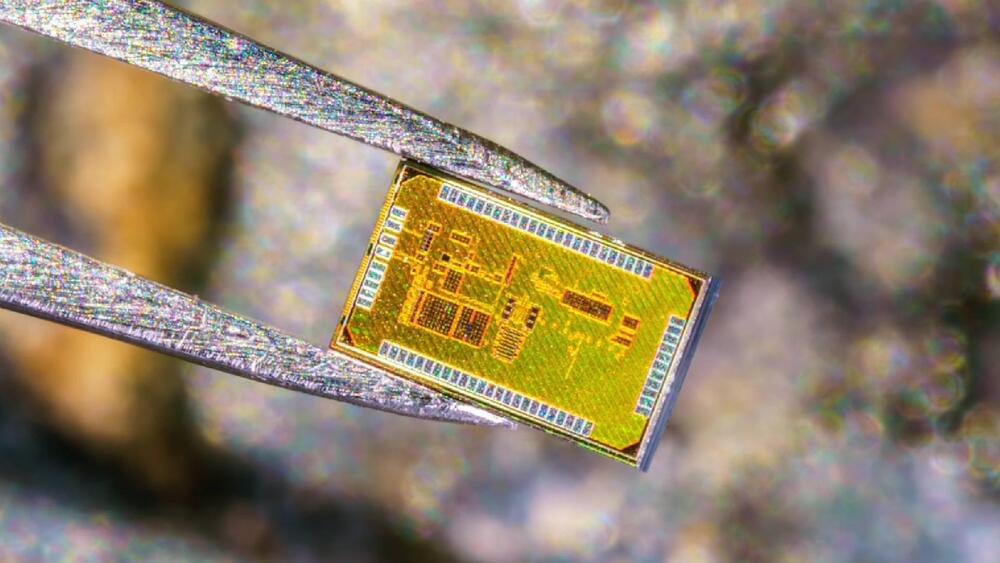The planets will move closer and closer in the night sky until March 1.
Everything you need to know about the upcoming Venus-Jupiter conjunction.



Synthetic speech and voice cloning startup Resemble AI has introduced an “audio watermark” to tag AI-generated speech without compromising sound quality. The new PerTh Perceptual Threshold) Watermarker embeds the sonic signature of Resemble’s synthetic media engine into a recording to mark its AI origin regardless of future audio manipulation, yet subtle enough that no human can hear it.
Audio Watermarking
Visual watermarking hides one image within another, invisible without a computer scanner in the case of particularly high-security documents. The same principle applies to audio watermarks, except it’s a very soft sound that people won’t notice but encoded with information that a computer could decipher. The concept isn’t new, but Resemble has leveraged its audio AI to make PerTh more reliable without compromising the realism of its synthetic speech creation.
Quiet sounds can be obliterated easily in most cases, but Resemble figured out a way to hide its identification tones within the sounds of speech. As people talking is the point of Resemble’s services, the audio watermark is much more likely to come through an edit unscathed. Resemble takes advantage of how humans tend to focus on specific frequencies and how louder sounds can hide quieter noises that are close in frequency. The combination masks and protects the watermark sound from humans noticing or being able to extract the audio watermark. Resemble’s machine learning model can determine where to embed the quiet sonic tag, generate the appropriate sound, and put it in place. The diagram below illustrates how the watermark hides in plain sight, or sound in this case.

Blurring lines between man and machine.
A breakthrough has made way for a new paradigm in bioelectronics. Earlier, it took the implantation of physical objects to initiate electronic processes in the body. Humans have incorporated technology to enhance the human experience and take charge of their evolution. They’ve also integrated devices within them that could alternately function as organs when biological tissues fail.
Scientists have now developed a viscous gel that will be enough in the future.
Researchers at Linköping, Lund, and Gothenburg universities in Sweden have successfully grown electrodes in living tissue using the body’s molecules as triggers.
Thor Balkhed.
Earlier, it took the implantation of physical objects to initiate electronic processes in the body. Humans have incorporated technology to enhance the human experience and take charge of their evolution. They’ve also integrated devices within them that could alternately function as organs when biological tissues fail.
The brain signals successfully directed the robodogs toward a number of locations that the human controller picked “telepathically” by imagining them.
The Australian military is reportedly testing a unique artificial intelligence (AI) “brain robotic interface” to control “robodogs” synced with troopers’ minds.
The army “is exploring the use of brain signals to control robotic and autonomous systems.” reads the video description.
Australian Army.
The breakthrough AI allows soldiers to control these robot dogs or ‘robodogs’ using advanced digital “telepathy,” according to a video released by the Australian army last week.

Firstly, the space agency must develop a battery that can withstand Venus’ hellish conditions.
You may be surprised to learn that humans have sent several landers to Venus’ surface. The Soviet Venera missions, for example, transmitted the first-ever image from another planet on October 20, 1975, after sending its Venera 9 lander to the surface of Venus.
That mission lasted less than two hours on the planet’s surface due to the immense atmospheric pressure and scorching temperatures on Earth’s so-called evil twin.
Now, NASA aims to build a lander called LLISSE, that can withstand those conditions and beam a wealth of data about our nearest planetary neighbor back to Earth.
Lunar and Planetary Institute.
The Soviet Venera missions, for example, transmitted the first-ever image from another planet on October 20, 1975, after sending its Venera 9 lander to the surface of Venus.

The fungus has been traditionally used as a fire starter.
A fungus called tinder fungus that grows on the bark of rotting beech and birch trees has been used as a fire starter for a long time, but it may just have a new use: the creation of plastics.
Researchers at the VTT Technical Research Centre of Finland proceeded to analyze the internal structure of the fungus, formally called Fomes fomentarius, to understand its strong yet lightweight consistency.
Dhoxax/iStock.
Humans have used the material to feed fires for centuries. But it recently piqued the interest of the scientific community as a replacement for certain plastics, according to a study published in the journal Science Advances on Wednesday.

The devices would not need batteries because they can harvest power from LTE signals instead.
Radio-frequency identification (RFID) uses electromagnetic fields to automatically identify and track tags attached to objects. This is a feature that would allow you to, for instance, know everything that is in your fridge and when it expires.
A new technology developed by engineers at the University of California San Diego can allow that possibility, according to a press release published by the institution on Tuesday.
The innovation is the first backscatter integrated circuit that can enable wireless communication and battery-less operation coming from a single mobile device.
“This approach enables a robust, low-cost and scalable way to provide power and enable communications in an RFID-like manner, while using smartphones as the devices that both read and power the signals,” said Patrick Mercier, one of the new paper’s senior authors and a professor in the Department of Electrical and Computer Engineering at the University of California San Diego.
In addition to queueing up songs, it will provide insightful commentary too.
Music streaming service Spotify is the latest tech company to launch an artificial intelligence (AI)-powered product. Dubbed DJ, the service was launched for users in the U.S. and Canada on Wednesday, a company press release said.
Personalized suggestions are what Spotify is known for. The company has used machine learning to understand music, its users, and their preferences and looked to match them (pun intended) successfully. At a time when companies are keen to use generative AI models in their products, Spotify too has jumped into the fray.
Spotify/ YouTube.

The German company will launch its operating system by the mid of this decade.
German luxury and commercial vehicle brand, Mercedes Benz, has announced its software partnership with Google to offer “super-computer-like” navigation and other services in every car, Reuters.
Mercedes’ plans for the future
Mercedes’ partnership with Google follows the route that conventional carmakers such as Ford, Renault, Nissan, and General Motors have taken to add Google’s suite of services to their cars. This partnership allows users to tap into Google’s Maps, Assitant, and other services and use traffic information to determine the best routes to reach their destination.
Further, the company is revamping how the software side of its cars works. Moving away from attempts to integrate different software packages into the car, Mercedes will now own the operating system dubbed MB.OS and ask partners to build their services to work with the OS.